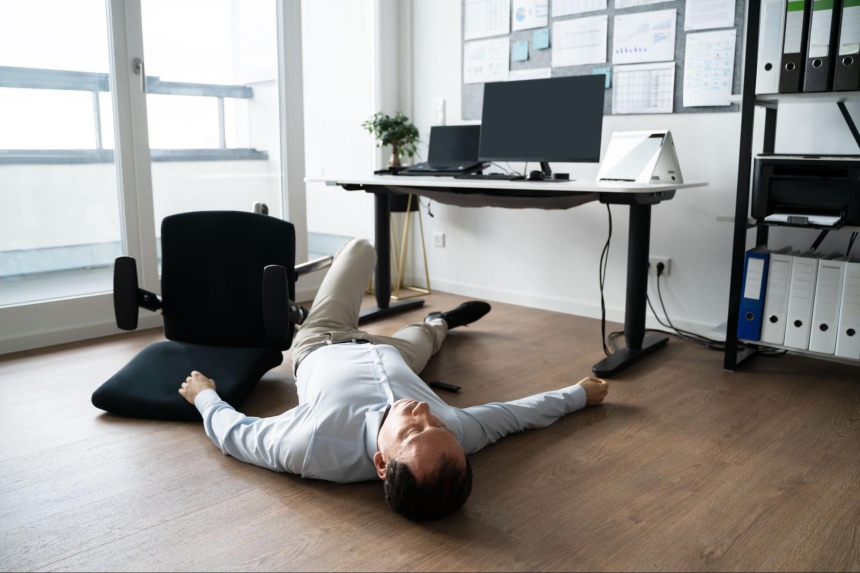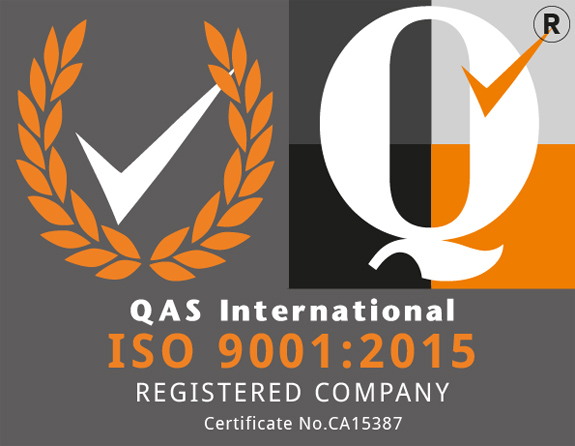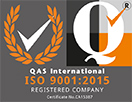
Workplace and office accidents can happen anytime, ranging from minor injuries to serious, life-changing incidents. Knowing how to prevent accidents in the workplace is crucial, as well as how to identify and address potential hazards before they can cause harm. This article will look at ways to identify some of the most common workplace accidents and reduce the associated risks while covering the crucial information you need to keep your office or workplace safe and accident-free.
According to the Health and Safety At Work summary statistics report for 2022, the government’s Health and Safety Executive recorded that employees sustained 565,000 non-fatal injuries due to workplace accidents in 2021/22. The most common of these were slips, trips, and falls (30%), handling, lifting, or carrying (18%), and being struck by a moving object (11%).
Even the most safety-conscious and prepared employees can be affected by work-related accidents and injuries. But by understanding the potential hazards, taking steps to prevent them, and educating and involving your team in workplace safety, you can create a safer and healthier work environment for everyone. Here are some suggestions on how to do it:
A thorough risk assessment can be vital in preventing accidents, helping you find potential physical, mental, and chemical hazards before they become an issue. These should be carried out regularly, ensuring you check all areas of your business, highlighting any potential risks, big or small, and acting upon your findings.
It’s common for facilities managers to carry out risk assessments. But it’s important your employees are involved too. They’ll know of issues or problems, and their practical knowledge is valuable when developing and introducing preventive measures.
By walking through the workplace and assessing all types of equipment and working practices, you’ll be able to identify and map out any potential hazards associated with both. But remember to talk to staff and managers who can provide information on things that aren't immediately obvious, like the need for any slip resistance matting.
Following your risk assessment, implementing your findings throughout the workplace will make a real difference to your staff's health and safety. While new safety measures should be suitable for preventing potential hazards, you should focus on the most critical improvements first without trying to implement everything all at once, which can be costly.
This is an ideal time to overhaul any of your safety policies and procedures that are currently in place. Ensure that your safe working systems are added to a wider health and safety policy covering the whole company, and update any safe operating procedures, such as job safety or work instructions.
Any new or revised health and safety policies shouldn't be confined to a manual. Regular training and educating all staff in correct safety methods and procedures is essential to overall compliance. Much of this can be done in-house, for machine operation, for example, but you may need specialist training in areas such as first aid or fire safety.
All equipment and machinery should be regularly inspected for potential hazards, formally or informally, to ensure staff can use them safely and any problems rectified before becoming a health and safety issue. Any protective equipment, such as slip-resistance matting, clothing, safety goggles, overalls, and gloves, should also be provided and regularly checked.
Creating a workplace safety culture is essential for preventing accidents and injuries and maintaining a healthy and productive work environment. By doing this, you can encourage an open, transparent, and cooperative work culture while demonstrating your commitment to safety through clear expectations, employee involvement, and ongoing communication and training.
Promoting more open communication about safety means your employees will feel comfortable sharing their concerns, allowing for potential hazards to be identified and addressed before they can cause harm. Encourage an open dialogue between management and employees through weekly or monthly safety talks throughout the business.
Additionally, employee recognition can greatly acknowledge their efforts in demonstrating safe behaviour, working practices, and promoting safety. Rewarding them for this is a way to show they’re adding significant value in creating a positive safety culture.
Employers have a duty of care to safeguard all employees and visitors, and a lack of safety measures will mean a risk of injuries and, potentially, lives. Investing in safety means you prevent damage to machinery and property, and avoid reduced productivity or business interruption, while your reputation and profitability remain high.
Responding to workplace accidents quickly and effectively is crucial in preventing harm to employees and damage to equipment. But failing to report serious accidents in the workplace under the Reporting of Injuries, Diseases and Dangerous Occurrences Regulations (RIDDOR) could result in fines. To ensure all staff can respond to accidents, you should take the following steps:
An accident response plan should be in place to ensure the relevant people know what’s going on and who’s responsible for taking action. This plan will help reduce any potential damage your business could face in the event of a severe accident. The response plan should include details such as what actions will be taken, how those actions will be completed, and who will complete them.
Training your employees on how to respond is essential to enforce your commitment to safety if anyone suffers a fatal or non-fatal workplace accident. These accidents can happen anywhere, and a trained responder could prevent a non-fatal accident from becoming fatal.
Should any accident occur in your workplace, a full investigation should take place. Gathering and analysing all information is crucial to understand what happened before identifying risk control measures and implementing any preventative measures. Also, ensure your accident response plan is updated if necessary.
Workplace accidents that can cause physical and financial harm are a serious issue. Employers should take the necessary steps to keep employees safe and take proactive measures to reduce risks, from training to safety protocols, equipment maintenance, and more.
With over 30 years of experience, MatsDirect UK provides a wide range of safety mats to prevent some of the most common accidents in the workplace. From anti-static floor mats and electrical switchboard safety matting to anti-fatigue mats and desk chair mats for personal safety or complete entrance matting systems to prevent slips and ensure the safety of customers and employees.
Talk to the MatsDirect UK experts today for more information by sending us a message, calling us on 0161 797 6785, or emailing sales@matsdirect.co.uk. Join some of the world’s most successful organisations and invest in the highest-quality safety mats and flooring to ensure your employees' safety.

MatsDirect UK Ltd is fully ISO 9001:2015 (Quality Management System) accredited, which means we have demonstrated our ability to consistently provide products to the industry’s highest quality and standards.
Now, how’s that for peace of mind?

Website designed by Highpoint Media
